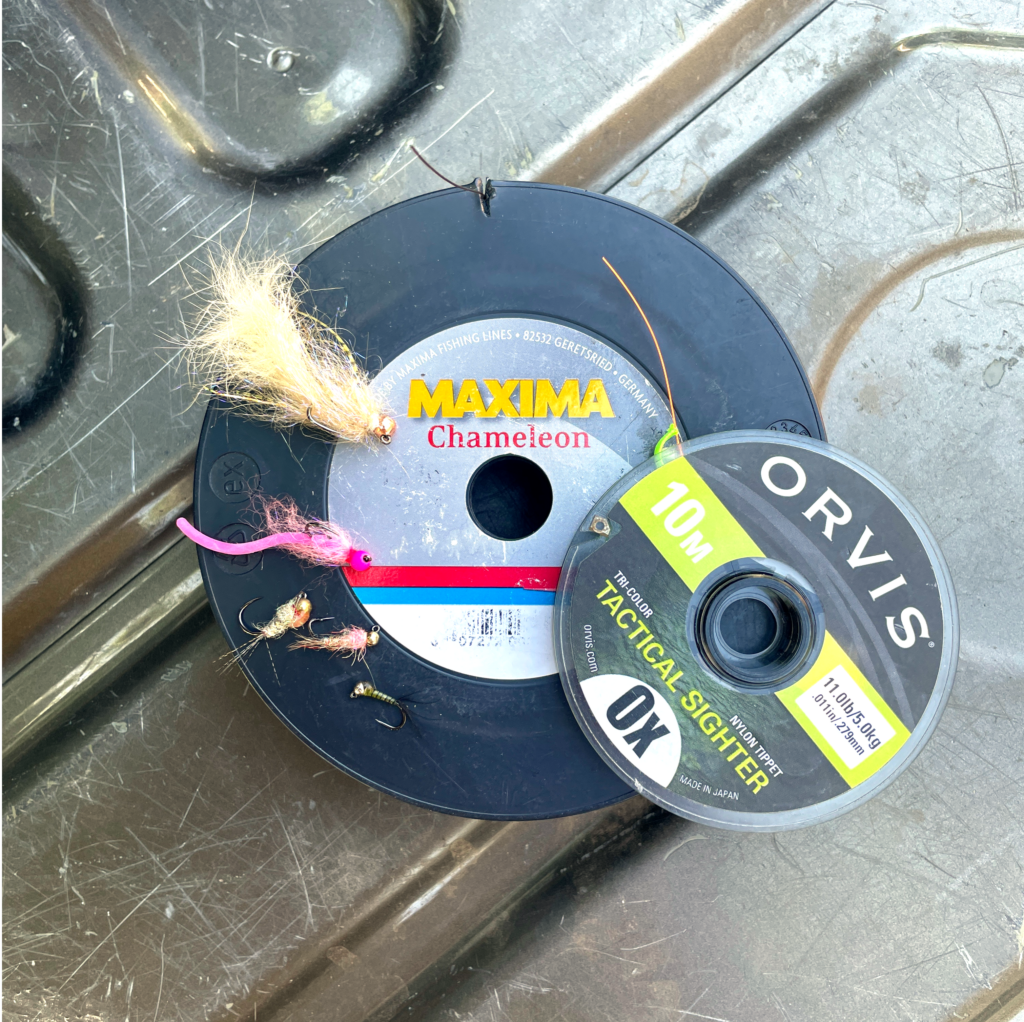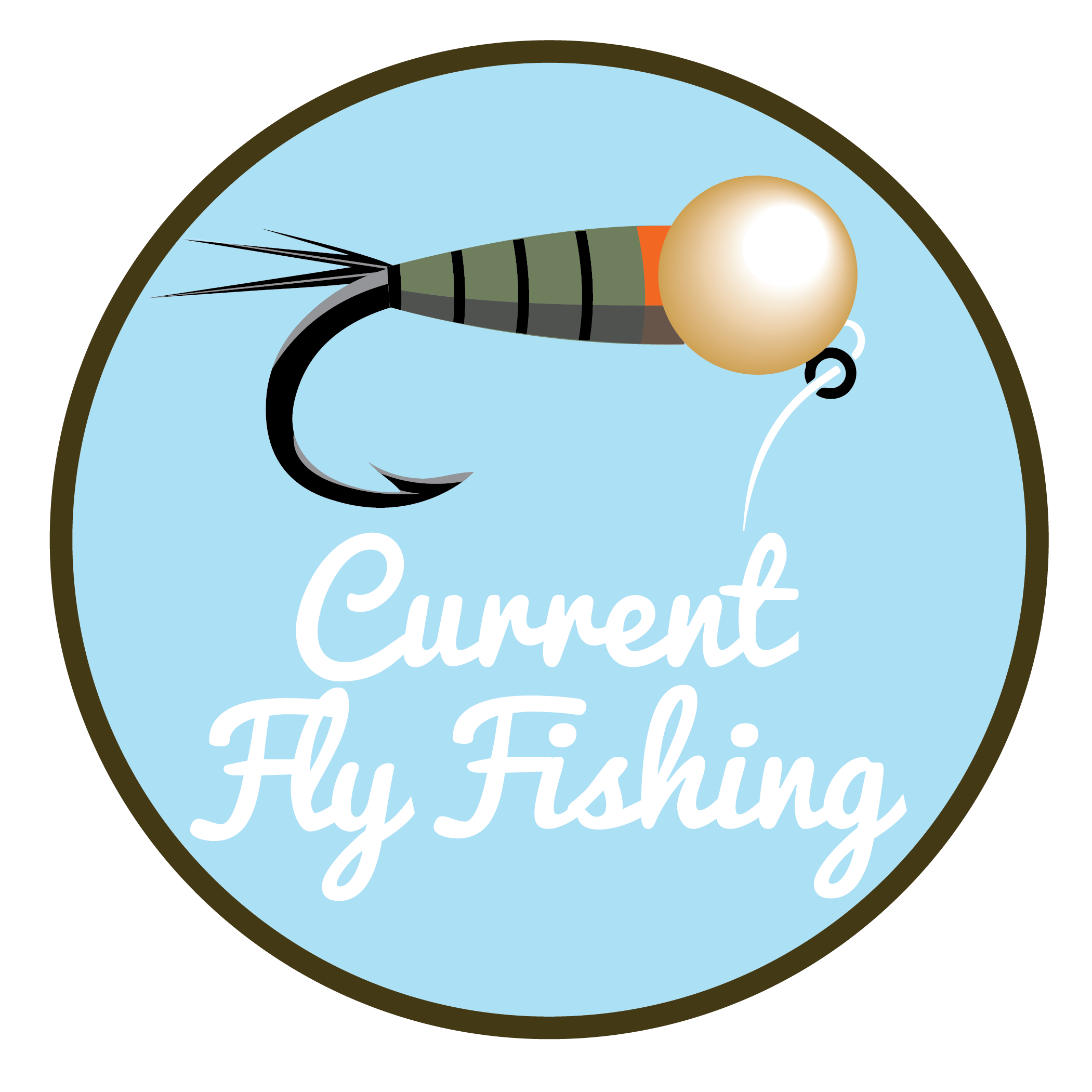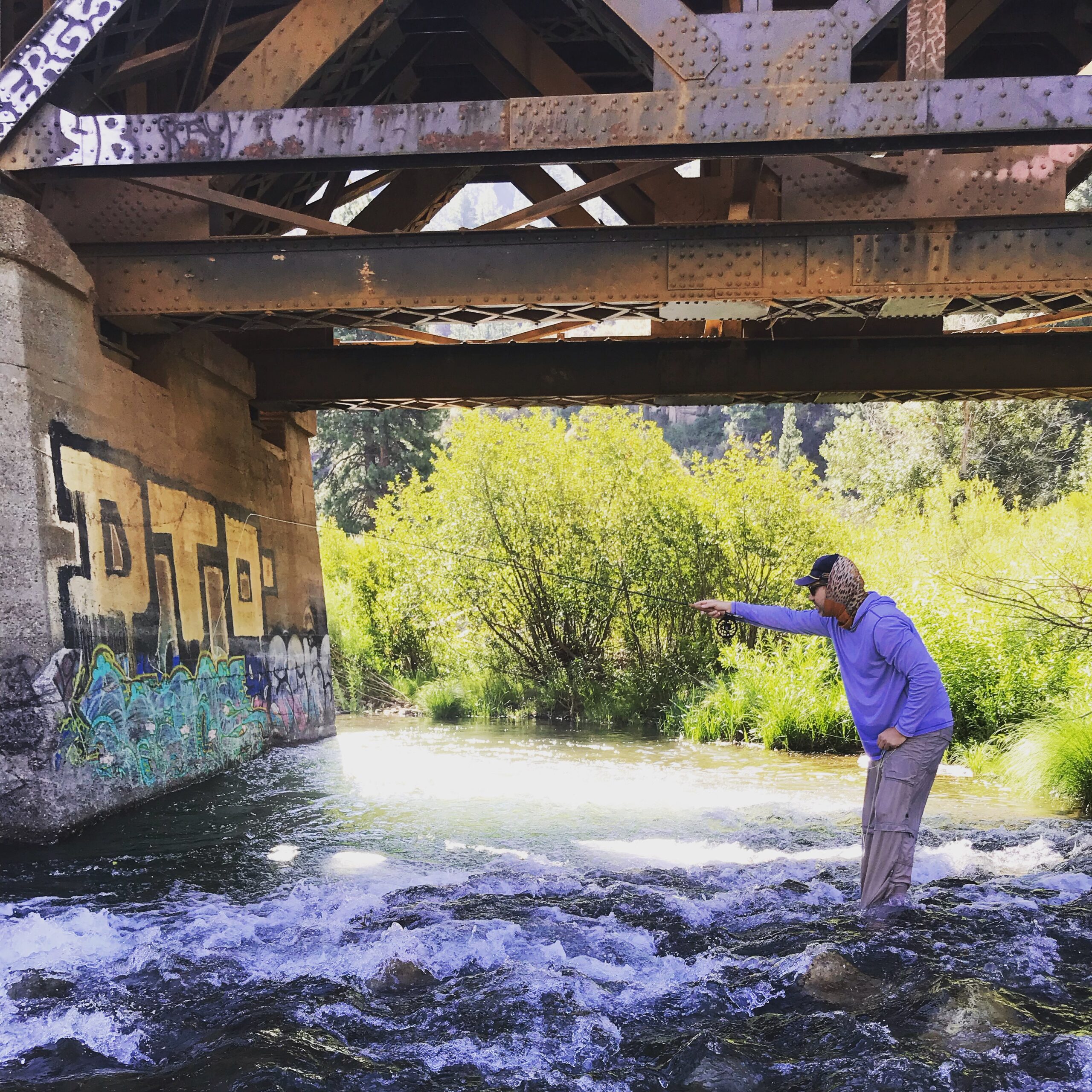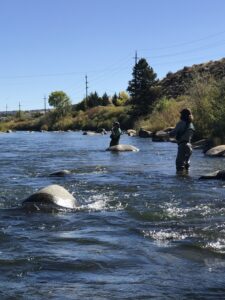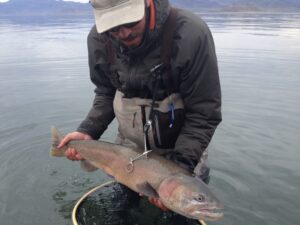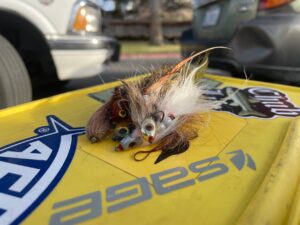European Style Nymphing | Tight Line Nymphing | Czech Nymphing What is it? What Gear do I Need? How Does it Work?
European Style Nymphing (ESN), Czech Nymphing, Tightline Nymphing, is there a difference? Yes and no, there are slight differences in the way the leaders are tied and what weight of flies are used but for the most part, they all employ the same mechanics and are very similar. To keep things simple I’m going to use the abbreviation ESN to refer to this topic as one broad technique.
The history of ESN is often and adamantly debated among anglers. Most people will tell you it gained popularity and spread across the industry when competitive fly fishing teams started using these long leaders, weighted flies, and colored lines to catch fish during tournaments. Competitive fly fishing? Who knew. It’s not the biggest thing in the states, not anything close to the Bass fishing circuit we know here but in Europe, it has a moderate-sized following. There are angling teams representing many countries around the world including the USA. Without getting too deep into it the basic rules of these tournaments are any fish 8” or longer qualifies for points, no weight is to be attached to the line (split-shot), anglers are giving a section to fish called a beat, and they have a certain amount of time to catch as many as possible. That’s what you’ll usually find when you look into the history of the method but If you ask any older guide who’s been at it for 30+ years they’ll probably tell you they’ve been using this technique or something very similar to it for many years and long before this whole “Euro” thing. Either way or whoever started doing it first will always be up for debate and if you find yourself locked in this debate just realize you’re wasting time arguing when you could be on the water.
So what is it? Let’s start with the flies, ESN flies or Euro Nymphs are heavily weighted. The flies usually are tied with tungsten beads and/or lead wraps. Being that in the competitive world split shot is not allowed the angler still needs to get their flies down. The flies can range from true imitations to attractor patterns. Many include a hot spot of fluorescent color applied using bead, UV resin, thread, or material. The flies you’ll see that are labeled specifically “Euro” will usually have one or more of the qualities listed above. If you’re holding yourself to the competitive rules then you’ll have to keep the weight in the fly itself. If you’re not limiting yourself to the rules of competitive angling you’ll have a little extra freedom when it comes to rigging and any nymph fly can be used weighted or not.
Just like any fly fishing technique, there are limitless combinations of flies weights leader lengths, rods, reels, and so on. Everyone has their way of doing it and I think that’s great! If we all did the exact same thing every time we rigged, fly fishing would be way less complicated and subsequently less fun. I will describe a couple of setups that I use and find to be effective, feel free to modify and experiment because that’s what this sport is all about. A lot of how I rig, the amount of weight I use, and the flies I select and tie are directly related to the water I fish most often. My home water is the Truckee River and as a result, the rods may be stiffer, leaders may be stronger, and flies heaver than the average ESN setup. Take that into account and modify it to fit your needs.
ESN fishes differently than an indicator set up, It allows for more precise control of the line and depth of your flies. It tends to deliver a drag-free drift more often even in faster water. Instead of an indicator, ESN employs a “Sighter” ( a colored piece of line built into the leader and placed a predetermined distance from the flies). The sighter is mainly used to gauge the depth of your flies by keeping the sighter material lifted off the waters surface. Instead of mending you’re lifting the rod tip to allow only your tippet to enter the water leaving no line to lay on the water at any given point. Keeping a tight or more acute angle between the rod tip and leader will allow the line to go as straight down into the water as possible giving you a better drift. Leading the rod downstream slightly ahead of your leader will bring you in contact with your flies by putting a slight amount of tension on the line. Setting the hook is fairly simple, just accelerate your leading movement and you’ll know if it’s a fish or a rock you’ve felt on the line. When there is a slight tension between your rod tip and flies you’ll feel your flies tap the bottom of the river or a fish biting them. In practice it resembles “High Stick Nymphing” with an indicator but with a few differences.
Why it works…. When a river flows, especially when it flows rather fast the water near the bottom moves slower than the water at the surface, sometimes it moves much slower than expected. When fishing ESN very little line is on the water and the thin tippet that’s in the water has a much easier time cutting through the current. As a result, a drag free drift is accomplished much easier than with an indicator setup. ESN also allows the angler to adjust the depth of the flies in mid-drift. This ability makes for extremely targeted drifts that can adjust in depth to match the contours of the river bottom. With ESN you’ll feel the grab, ever wonder when the indicator moves but you didn’t set whether it was a fish or not? You’ll have a better idea with ESN, you’ll still miss fish every now and then but you’ll know it was a fish you missed not a rock.
The Line….You’ve got a few options when it comes to the type of line you can use. What it really comes down to is versatility. The rods, although specific for ESN are still fly rods and are fully capable of casting a traditional weighted fly line.
One option I use when I just want to bring one rod and not carry multiple setups with me is as follows. I will spool up a traditional weighted fly line to match what the rod calls for and then attach a 25’-30’ long section of Maxima “Chameleon” 12lb test right to the loop on the end of the fly line using a clinch knot. From there I use a surgeon knot to attach a 0x 18” long sighter. On to the terminal end of the sighter, I use a clinch knot to attach a tippet ring. This setup gives me the most versatility when I only bring one rod. I can fish ESN effectively with maximum sensitivity or take the straight mono leader off and attach a traditional tapered leader then I have the option of fishing dries, dry dropper, or a light indicator rig. This tends to be especially helpful if it becomes windy or if a hatch suddenly appears. I like this setup a lot because of its versatility, sensitivity, and ability to shoot line. However, a couple of drawbacks are that the straight mono leader is a bit hard to handle and likes to coil up if not stretched before fishing it. It also tends to slip through the gaps between the reel and the spool and can cause a jam. I use a specific reel for this setup listed below for this reason.
Another option I use is to spool up a .022” Euro Nymphing specific fly line Rio’s “FIPS Euro Nymph” and then attach an 8’ section of 12lb Maxima “Chameleon” using a clinch knot to the loop on the end of the fly line. On the terminal end of the 12lb test, I’ll attach an 18” 0x sighter using a surgeon knot. On the terminal end of the sighter, I’ll attach a tippet ring. I like this setup when I’m using my dedicated ESN setups. I find that it’s much easier for clients to handle the .022” fly line rather than the straight mono leader. The .022” doesn’t seem to coil as much I haven’t had any issues with it slipping through the gaps in the reel between the spool and frame on a standard fly reel. The drawback is that now this setup is a dedicated ESN setup and won’t do much else The thicker fly line tends to be less sensitive than the straight mono leader. The .022” fly line tends to be a little tougher to shoot as well. But for me as a guide, this is my preferred rig to hand to a client who’s learning the ESN. I’ve found it to be the most user-friendly way to introduce it.
Another common line setup I see is to use a traditional weighted fly line and then attach a line like Rio’s “Euro Nymph Shorty”. The shorty is a 20’ section of a .022” euro nymph line. Attached to the terminal end of the shorty goes an 8’ 12lb leader, 18” 0x sighter then a tippet ring. This allows the angler to have a light unweighted line running through the guides for sensitivity and still have a traditional weighted line behind that just in case. It has many of the benefits of both options listed above. A drawback is now you have a few knots and line connections running through the guides if a fish decides to take line and that may pose an issue.
You’ll hear lots of ways to line up your reel for ESN and that’s great try them and see what works for you. Above are just a couple I use and one I’ve seen on occasion. Feel free to take that info and use it or modify it to fit your needs.
The Tippet…. The length of the tippet used varies on where you’re fishing. I typically set up using a 5’-6’ of tippet between the tippet ring on the sighter down to the flies. The reason is that the typical pockets and holes I fish are about that deep. It’s easy enough to fish any water shallower than that by just keeping the sighter elevated off the water. If I run into a deeper spot I may add more. Typically I’ll run 5x and sometimes 4x. One of the advantages of longer and lightweight rods that you don’t hear a lot about is tippet protection. You can afford to use 5x on a 20+” fish with reasonable confidence when fishing a 3 or 4wt rod. We commonly land fish of that size and greater on The Truckee River with light tippet, thats not to say the fight isn’t nerve-racking!
Rigging flies…. Here is where you can really take some artistic liberties. I’ll typically attach an 18” piece of tippet to a 5’ leader using a surgeon knot. I’ll tie the knot with a long tag end leaving the tag end facing the terminal end of the leader about 5” long and trim the other tag end facing back up towards the rod. A point fly is attached to the terminal end and another fly is attached to the tag end of the surgeon knot. This requires weighted flies to work. A different way to set up is to use a drop shot rig, basiclly instead of a fly on the terminal end of the leader a piece or multiple pieces of split shot are used. I’ll still use two flies, by repeating the surgeon knot approach listed above only I’ll do that twice. Obviously, not competition legal but hey, were not competing. With the drop shot rig, you can now fish any type of fly weighted or not. Beware, there are laws that vary from state to state that limit the use of drop shot rigs and exactly how much weight can be used below a hook. In California it’s anything more than 1/2oz below a hook is illegal. These laws are in place to prevent people from snagging fish. Even the heaviest fly fishing rigs won’t even come close to a half ounce.
The Rods….Typically I use a 10’ 6” 4wt when fishing ESN on the Truckee River. We have big fish and it’s not unusual to run into them, I like to have a little extra backbone in the rod for casting heavier flies and landing larger fish. I also have a 10’ 6” 3wt I’ll use on occasion when I’m casting lighter flies and looking for more sensitivity. The rods I like are Echo’s “Shadow 2” and Cortlands “Nymph”. These rods are fairly inexpensive compared to higher-end brands and you can usually order just the tip sections direct from the company and have a stockpile of them at home for when you snap the thing. These types of rods are light and sensitive as a result they’re pretty flimsy and sooner or later you’ll need a new tip.
The Reels…. Depending on how you choose to rig your leader you’ll want a reel with reasonably tight tolerances between the spool and frame. If you go with the straight mono leader this is a must, the thin leader has the tendency to slip through the small gaps in the reel and can cause it to jam up frequently. If you go with the .022” euro nymphing fly line this doesn’t seem to be a big issue. For the rod I use that utilizes the .022” fly fine I use a Galvan “Torque” size 4-5. For the rod, I use the straight mono leader with I use a Cortland “Crown” size 3-5.
Here at Current Fly Fishing, we find ESN to be a highly effective method when fly fishing the Truckee River in particular. The Truckee River is a fast-flowing river that can vary in flow depending on the season. I fish and tie all sorts of Euro styles flies tied specifically for the Truckee River many of which imitate baitfish, sculpin, and other small trout. Even if you’re not fly fishing on the Truckee River you may find ESN to be an effective method on your home water.
Hopefully, this info is helpful and we shed some light on the topic. I’ll just reiterate that there are no rules on how you set up your system may be just some guidelines and reference points. So, get out there and keep that rod tip up!
If you’re interested in fly fishing the Truckee River or any other location we offer and would like to book a guide trip please feel free to call me directly or check out the website for all rates and locations offered.
Dave Harvey
Owner/ Guide
Current Fly Fishing
(760) 937 2234

